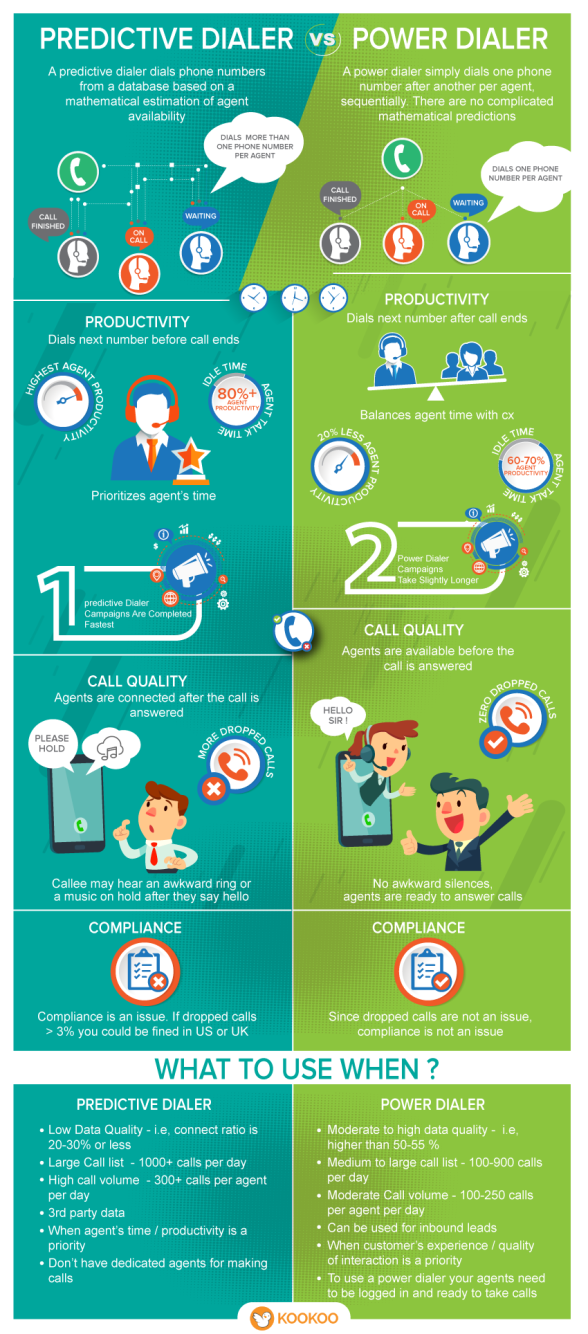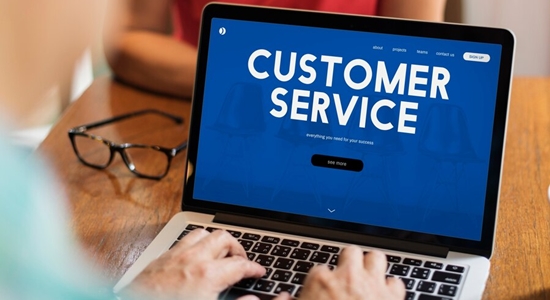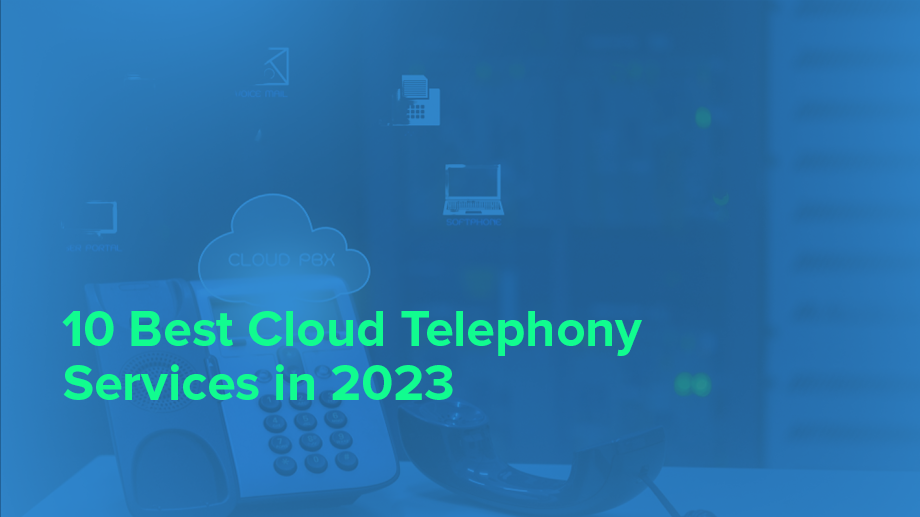- Resources
- Predictive Dialer Vs Power Dialer
Predictive Dialer Vs Power Dialer

Auto dialers are of many kinds. This includes manual dialers, preview dialers, power dialers, aka, progressive dialers, and power dialers. How do you select what’s right for your business? You should choose based on how many agents you have available, how good your data is, and what your priorities are.
When your call lists are small, you can choose either manual or preview dialers. But when your call lists are large, deciding whether to use a predictive or power dialer is often confusing. So we compiled the differences between these two dialers on this single infographic.
In this article, we will explore:
What is the Difference between Power and Predictive Dialers?
1. Basic difference: Power dialers are simpler.
Predictive dialer: A predictive dialer dials numbers from a database based on a mathematical estimation of agent availability. The estimations are based on factors like the number of agents available, average talk time, etc.
Predictive dialer dials multiple phone numbers per agent.
Power dialer: In contrast, a power dialer dials one number after another sequentially for each agent available. There are no complicated mathematical predictions.
It dials one phone number per agent. (If you make a 1:1 dialing ratio in the predictive dialer, it becomes a power dialer).
2. Productivity: Predictive dialers are more efficient.
Predictive dialer: A predictive dialer prioritizes the agent’s time. It lowers agent idle time and increases productivity, that is, agent talk time. You can expect it to give an 80% or higher agent efficiency. This is because the next number is dialed even before the agent finishes the call they’re on. This leads to Predictive Dialer campaigns being completed faster.
Power dialer: A progressive, aka, power dialer, is also efficient, giving about 60% or higher agent productivity, but it isn’t as efficient as a predictive dialer in prioritizing agent time. This is because the next phone number is dialed only after the agent completes a call. This means that Power dialer campaigns take longer to complete than predictive dialer campaigns.
3. Call Quality: Power Dialers give better CX.
Predictive dialer: In a predictive dialer, agents are connected after a callee answers the call. This means that your customer or prospect may hear an awkward silence, a ringing tone, or hold music until the agent connects. This could annoy them, and/or cause them to disconnect.
Power dialer: A power dialer connects the agent before the call connects. This means that your customer/prospect hears the agent as soon as they answer.
Training: Predictive Dialers need training to perfect
Predictive Dialer: Predictive dialers are more complicated. The manager/administrator needs to learn how to tweak many more settings like the dial rate to get the best results.
Power dialer: A power dialer is based on a straightforward concept, is easy to use and needs no learning/training to use.
4. Compliance: Power dialers ensure easy compliance
In many countries, you need to be wary of compliance while using your dialer. For example, in the US, if your dropped calls are greater than 3% it could invite a heavy fine. When you use your predictive dialer you need to keep adjusting your call ratios to ensure you stay within the dropped call limits.
5. Voicemail: Power dialer gives you the option
In the United States, more than 30% outbound calls reach the prospects answering machine or voice mail. While Power dialers have options to leave a message, Predictive dialers do not. This is because all calls connected to answering machines are automatically dropped by Predictive Dialers.
How to choose between Power & Predictive dialers?
No dialer is better or worse than the other. Each has its strengths.
Ozonetel allows five dialing modes including Predictive dialers, Power Dialers, IVR dialers, Preview dialer, and Manual dialers within its contact center software. Hope this infographic and article help you make an informed choice of which to use when.
Choose which dialer to use based on these five criteria:
- Data quality: When data quality is low (for example when it is sourced from a 3rd party), and your connect ratio is expected to be 20-30% or lower, choose a predictive dialer. When Data quality is high, that is a 50% or higher connect ration, choose a power dialer.
- Size of your Call List: Predictive dialers are recommended for 1000+ calls per day. Or when you need to make 300+ calls per agent, per day. Power Dialers are used for medium-large call lists. Use them when you need to make 100-900 calls per day. Or when you need to make 100-250 calls per agent, per day.
- Your priority: When agent time or agent productivity is a priority, use Predictive Dialers. When you don’t have dedicated agents to make calls, for example, you can use predictive dialers. When customer experience is a priority, use power dialers.
- Product Value: When your product value is low, the value of each call is consequently lower, therefore, it makes sense to use Predictive Dialers. When the product value is relatively higher, I recommend, power dialers.







